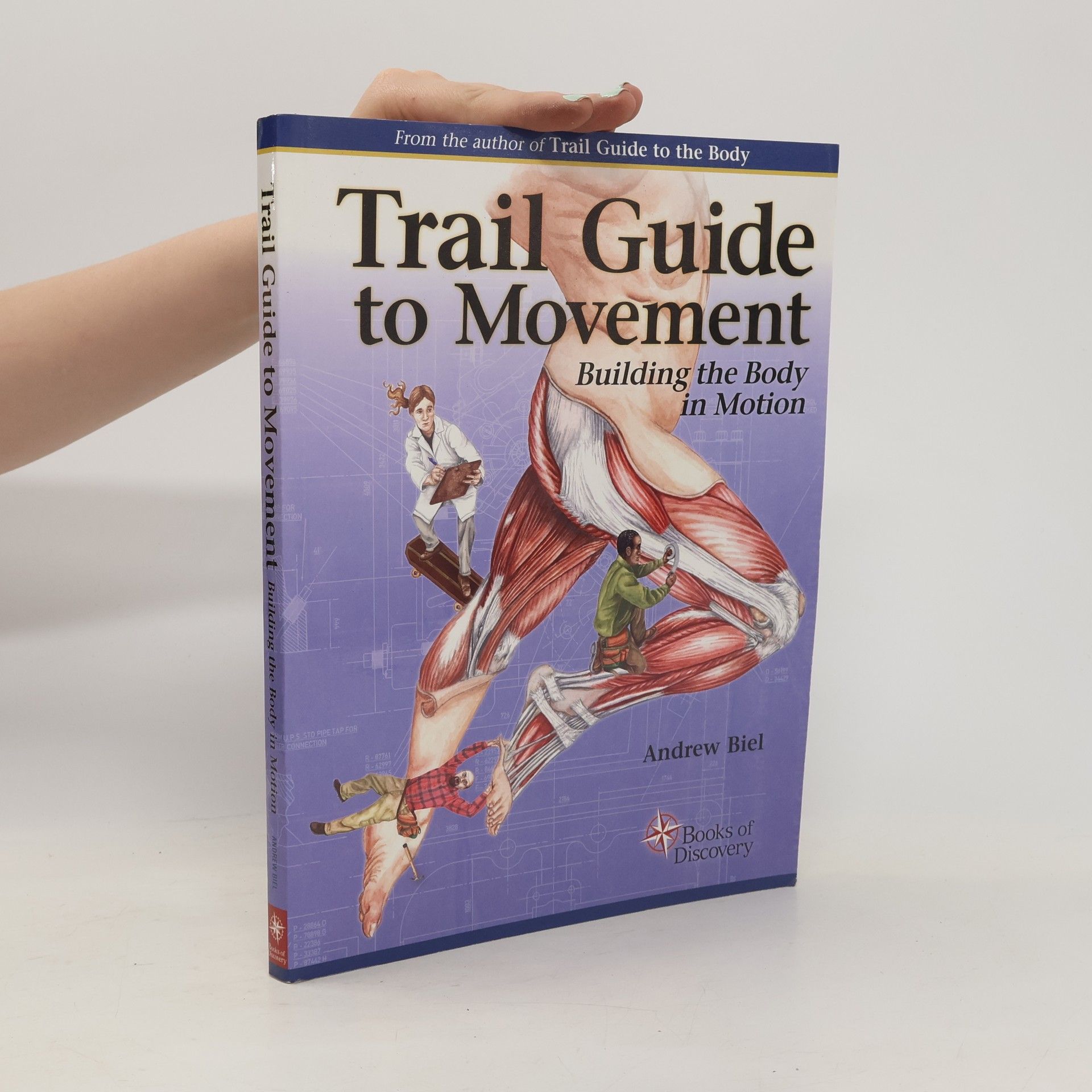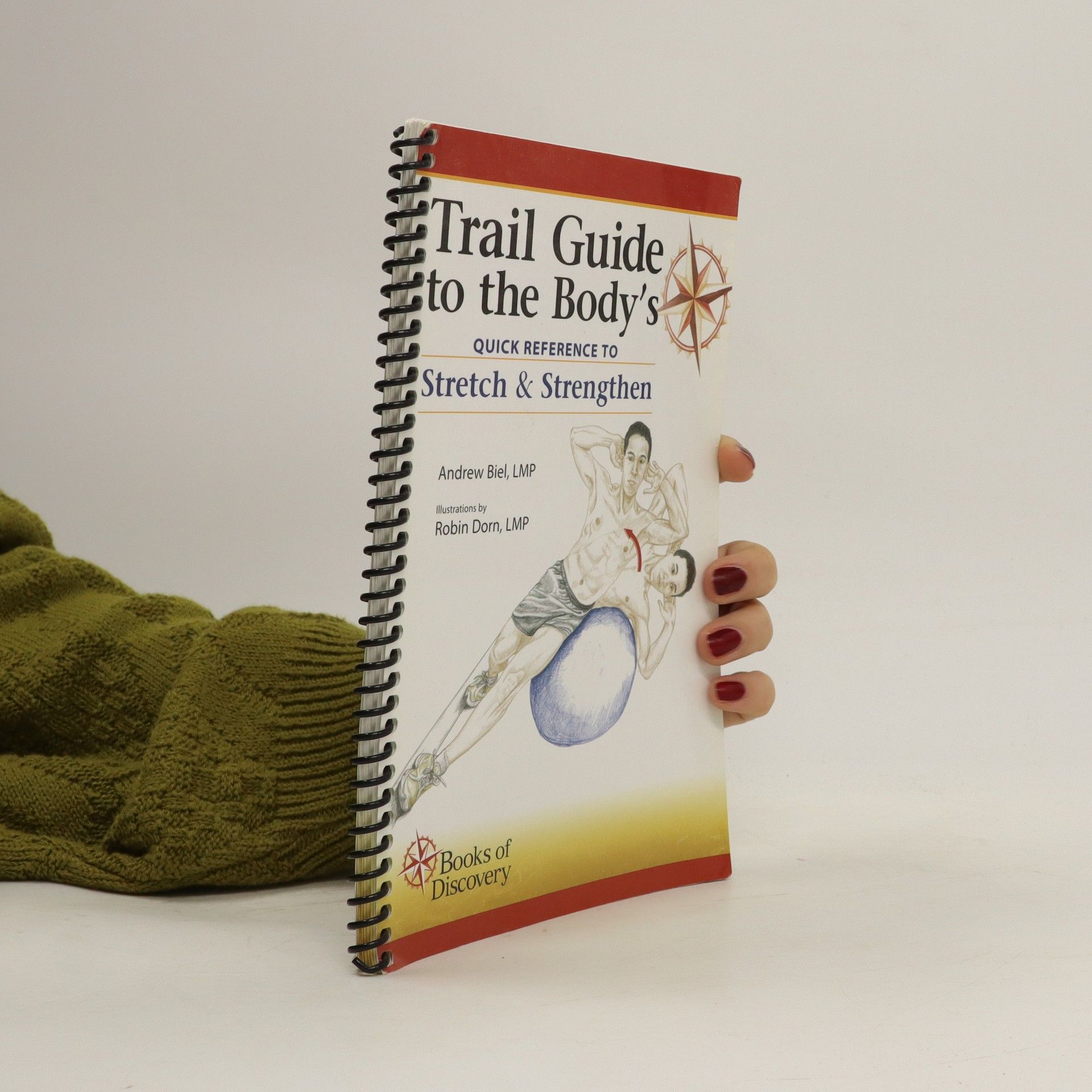Trail Guide Anatomie
Anatomie praktisch begreifen (mit DVD)
Andrew Biel ist der Autor eines wegweisenden Werkes, das unzähligen medizinischen Fachkräften muskuloskelettale Anatomie und Palpation vermittelt hat. Er konzipiert seine Schriften als Leitfaden, der es den Lesern ermöglicht, den menschlichen Körper manuell zu kartieren, zu navigieren und sich darin zu orientieren. Dieser Ansatz wurzelt in einer frühen Inspiration, einen Text zu schaffen, der verschiedene Körperstrukturen miteinander verbindet. Nach umfangreicher Entwicklung und bedeutender Verbreitung unter den Lesern setzt Biel seine schriftstellerische Tätigkeit fort.






Anatomie praktisch begreifen (mit DVD)
Your quick and easy guide to strengthening exercises and simple stretches. Our flagship text, Trail Guide to the Body: A hands-on guide to locating muscles, bones and more covers the subject of palpatory anatomy. This booklet is designed to present two complementary subjects -- stretching and strengthening. Strengthening reduces risk of injury; increases balance, stability and flexibility, keeping the body strong. Stretching improves flexibility and range of motion. This concise reference guide gives you: Instructions for 100 guided strengthening exercises and simple stretches, covering all the movements at the major joints Suggested uses of light equipment for stretching and strengthening Detailed four-color illustrations demonstrating muscle movement during the exercises This reference manual quickly puts these fundamental subjects of manual therapy at your fingertips. Great for manual therapists or anyone who values the benefits of stretching and strengthening. 103 pages, 120 images.
"Trail guide to movement is a companion book to Trail guide to the body: a hands-on guide to locating muscles, bones and more. While Body covers the hands-on subject of palpatory anatomy, this text explores how bones, fasciae, joints, muscles and other structures come together to produce human movement. Body puts your hands on the tissues; Movement wraps your mind around the body. The intent of this book is to serve as an introduction to the study of human movement for students, practitioners and instructors"--Introduction (page 2).
Über 500.000 Exemplare weltweit verkauft – nun erstmals in deutscher Sprache erhältlich. Dieses einzigartige Palpationsbuch führt den Leser anschaulich durch den Körper und seine Strukturen. Die Anatomie wird detailgenau beschrieben und durch viele Bilder eindrucksvoll dargestellt. Verlauf und Funktion der Strukturen werden alltagsnah und mit einer Prise Humor erläutert, während klinische Symptome das Gesamtbild abrunden. Schritt für Schritt erklärt der Autor, wie Muskeln, Gefäße, Bänder und Knochen schnell und einfach gefunden werden können – auch für ungeübte Anwender. Das Werk vermittelt Lage, Aufbau und Funktion der Körperstrukturen sowie das nötige Wissen über verschiedene Palpationstechniken. Zudem bietet es zahlreiche Tipps zur Verbesserung des Tastvermögens. Die vielen Abbildungen machen es leicht, jeden Schritt zum Erspüren der Strukturen nachvollziehbar und sicher durchzuführen. Alle Muskeln und Knochen sind übersichtlich in Zeichnungen dargestellt. In unterschiedlichen Routen werden die Körperpartien beschrieben, wobei genau erläutert wird, wie die entsprechenden Strukturen gefunden und gespürt werden können. Die humorvolle und präzise Sprache macht Anatomie und Palpation zu einem kurzweiligen und lehrreichen Erlebnis, ergänzt durch interessante Informationen zur Geschichte von Begriffen und Alltagsbezug, die für zahlreiche Aha-Erlebnisse sorgen.
A Hands-on Guide to Locating Muscles, Bones, and More
"Before you can assess or treat a muscle, you first must be able to locate it. This acclaimed book delivers beautifully illustrated information for learning palpation and the musculoskeletal system. It makes mastering the essential manual therapy skills interesting, memorable and easy. With 504 pages and 1,400 illustrations covering more than 162 muscles, 206 bones, 33 ligaments and 110 bony landmarks, this text provides an invaluable map of the body. This new edition includes an extensive appendix that describes the common trigger point locations and pain patterns of 100 muscles. Our student resource section, e-XPLORE has a wide variety of digital resources to support the Trail Guide to the Body textbook, including palpation videos, audio files and overlay images. These resources are available to students who purchase Trail Guide to the Body, 5th edition. Trail Guide to the Body is a highly recommended textbook for the state licensing tests administered by both the National Certification Board for Therapeutic Massage and Bodywork (NCBTMB) and the Federation of State Massage Therapy Boards (FSMTB) and is one of only five books on their official examination reference lists. In addition, the Board of Certification program for athletic trainers in the U.S. uses our high-quality Trail Guide to the Body illustrations in their various products, including exams. Whether you are a massage therapist, physical therapist, sports trainer or student in any bodywork modality, Trail Guide to the Body is for you!"